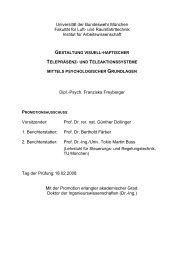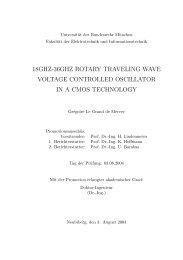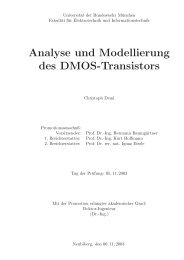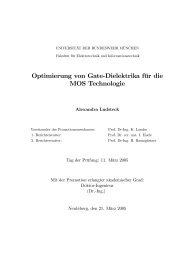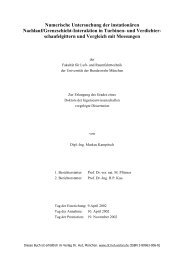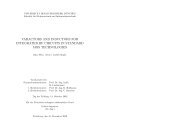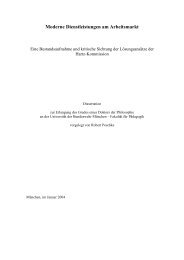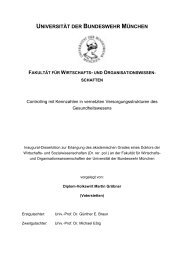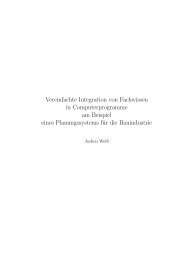Precise Orbit Determination of Global Navigation Satellite System of ...
Precise Orbit Determination of Global Navigation Satellite System of ...
Precise Orbit Determination of Global Navigation Satellite System of ...
Create successful ePaper yourself
Turn your PDF publications into a flip-book with our unique Google optimized e-Paper software.
Chapter 2 Observations <strong>of</strong> <strong>Orbit</strong> <strong>Determination</strong><br />
ti+ 1 = ti−1+ ∆t1+ ∆ t2.<br />
Then ∆t1+ ∆t2<br />
will be converted to the range observation by multiplying with velocity <strong>of</strong><br />
light.<br />
For two-way microwave measurement system, the received signal is reconstructed in a coherent transponder and<br />
retransmitted. The advantage <strong>of</strong> a two-way system is that only frequency fluctuations that occur in the up-link<br />
and down-link travel time are uncompensated and for time transfer it is unnecessary to know the precise<br />
positions <strong>of</strong> satellite or ground stations. The disadvantage is that the propagation errors (ionosphere and<br />
troposphere error) are increased twice.<br />
In the following section the basic observations such as ranging, range rates (Doppler), carrier phases and laser<br />
ranging used in two-way systems are discussed.<br />
2.2.1 Range<br />
S(t 1 )<br />
S(t 4 )<br />
S 2<br />
S 1<br />
12<br />
r(t 3 )<br />
r(t 2 )<br />
Figure 2-4 Two-Way Range Measurement<br />
S(t 3 )<br />
S(t 2 )<br />
2.2.1.1 Basic Observation<br />
In a two-way system, assuming the signal is transmitted from a receiver and returned to the receiver in some<br />
time later (see Figure 2-4), then two-way range observation can be expressed as<br />
L = c(<br />
t 4 − t1)<br />
= S1<br />
+ S 2 + ε<br />
(2-54)<br />
where<br />
1<br />
2<br />
1<br />
2<br />
1<br />
T<br />
2<br />
1<br />
1<br />
2<br />
S = || r ( t ) − S ( t ) || = {[ r ( t ) − S ( t )] [ r ( t ) − S ( t )]}<br />
(2-55)<br />
S<br />
2<br />
and<br />
3<br />
4<br />
3<br />
4<br />
T<br />
3<br />
4<br />
1<br />
2<br />
= || r ( t ) − S ( t ) || = {[ r ( t ) − S ( t )] [ r ( t ) − S ( t )]}<br />
(2-56)<br />
r ( t 2 ) satellite geocentric position vector at t2 r ( t3<br />
) satellite geocentric position vector at t3 S ( t1)<br />
geocentric vector <strong>of</strong> ground tracking station at t1 S ( t4<br />
) geocentric vector <strong>of</strong> ground tracking station at t4 The linear observation L is<br />
0<br />
0 0 ∂L<br />
∂L<br />
∂L<br />
∂L<br />
L = L + δ L = S1<br />
+ S2<br />
+ δr<br />
( t2)<br />
+ δS<br />
( t1)<br />
+ δr(<br />
t3)<br />
+ δS<br />
( t4)<br />
(2-57)<br />
∂r<br />
( t2)<br />
∂S<br />
( t1)<br />
∂r(<br />
t3)<br />
∂S<br />
( t4)<br />
where<br />
∂L<br />
∂S1<br />
= (2-58)<br />
∂r<br />
t ) ∂r(<br />
t )<br />
( 2 2



